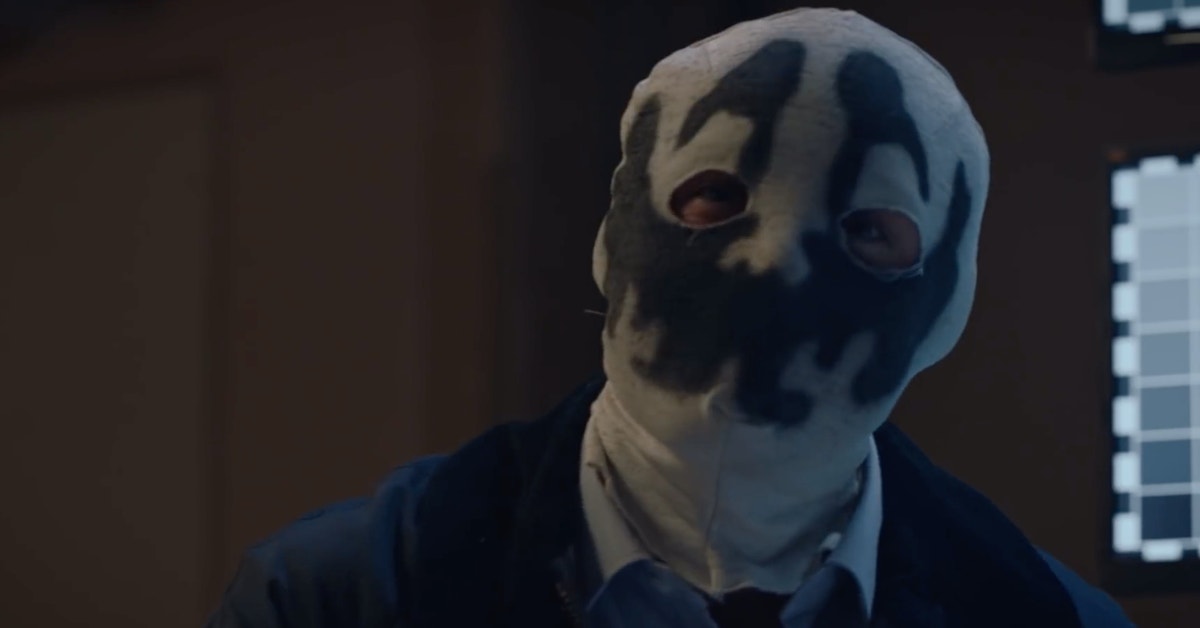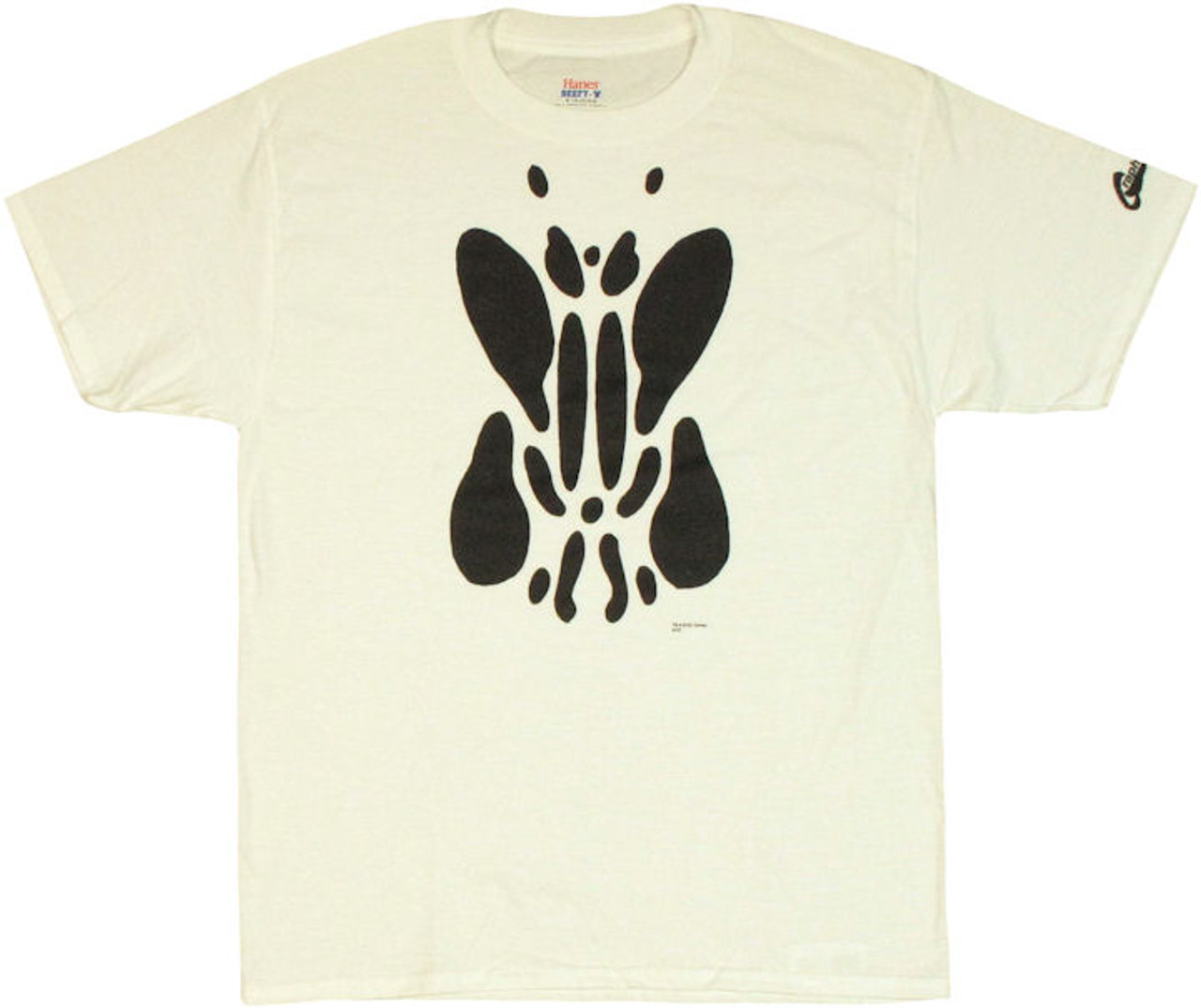
Moore, Gibbons: 210) The first actual scene with the symbol is in a flashback triggered by a Rorschach testcard in which Rorschach as a child experiences anxiety, brutality and physical abuse. It is represented in Rorschach’s childhood-drawing as a maleficent embodiment of his first encounter with his mother’s sexuality.(cf. Moore, Gibbons: 67) Nevertheless, the image of his sexual active mother haunts him in the form of the two loving silhouettes, one of the most reoccurring symbols of the graphic novel. As an adult he seems to tend towards asexuality, having no real sexual interests at all and driving him into being an outcast.(cf. Moore, Gibbons: 210) Thus, Rorschach shows his early disgust of human beings and their sexual behavior.

When seeing her in this situation, he can not cope with the situation as natural but confers the sexual intercourse remarkably often to deformed beings and animals, when dreaming about it.(cf.

This nightmare forms around his mother’s sexual occupation and the young boy’s confrontation with her in the act. Rorschach tries to comfort himself in the nightmare he lives in. Sarah Van Ness characterizes this attitude towards the missing father as “a complete fantasy, used to soothe the harsh reality of his traumatic past”(138).

Notably, he ascribes heroic values to his father without even knowing him, making him a patriotic hero who fought for “what was right”(Moore, Gibbons: 209). Because of her profession as a prostitute he never had a father figure in his life, leaving him with false fantasies about the long-gone father. Rorschach’s first remark regarding his parental situation defines what can be seen as a childhood trauma: “I have two parents, although actually, I don’t have any.”(Moore, Gibbons: 209) His father left him even before he was born his mother raised him alone. Considering all aspects of his psyche and world view, his decision to die will become clearer and one can assess the notion of life in Watchmen in a better way.Ģ. His identity’s origins are part of a realization about life’s cruelty which brings him near to his mentor figure the Comedian. Following that, this paper focuses on his world view as Rorschach and the world he lives in. They serve as the final trigger before his decision to die. One particular memory pinpoints his disturbing childhood, namely the loving silhouettes which are even more relevant when appearing at the end of the graphic novel. At first, his childhood suggests a psychoanalytical trauma which is essential for his wish of becoming a hero like his idea of his missing father. To investigate this notion of Watchmen it is necessary to understand different important aspects about the character. Is his death an admission that life has no room left for real heroes or rather an admission that he finally failed? According to this, Rorschach’s case serves as an illustration of Watchmen’s attitude towards life and whether pessimism is justified. Thus, his struggles constitute the extreme. At the end of the graphic novel his suicidal decision shows how far he pushes his dogmatic world view to the limits. He frequently demonstrates that he is not willing to deviate from his standpoint. Constructing his values around the idea he has about his father, Rorschach is an especially interesting example of a hero. Watchmen dares to call into question whether there is a real hero in life and presents us different stereotypical (super-)heroes to highlight more than one perspective on ethical questions. Following that train of thought means that harming or questioning the ideal fantasy could possibly result in existential disorders. An unknown or deceased father is a loss which is filled by the child’s ideal version of him while, simultaneously, it strives to adapt to this fantasy. In a sense noted by the motto above a father figure is a hero. Während enges Zusammenleben und der Zwang der Unterordnung oft Reibungen heraufbeschwören, erregen unbekannte oder auch schon verstorbene Väter im Sohn meist Mitgefühl, Parteinahme, Stolz, Sehnsucht, Idealisierung.(Frenzel: 731)

Wie der → Vater-Sohn-Konflikt ein Urphänomen familiärer Beziehungen ist, so erweist sich auch sein Gegensatz, die Verehrung des Vaters und das Streben, ihm ebenbürtig zu sein, als archetypische Spielart menschlichen Verhaltens.


 0 kommentar(er)
0 kommentar(er)
